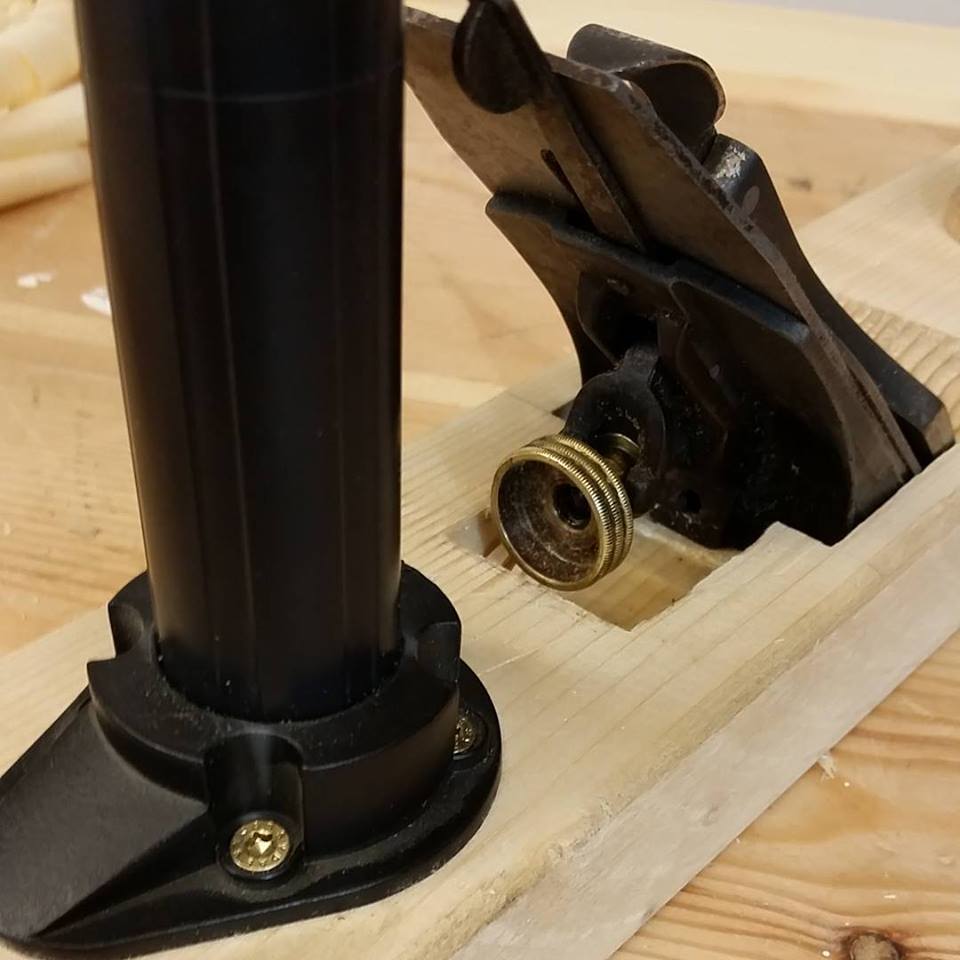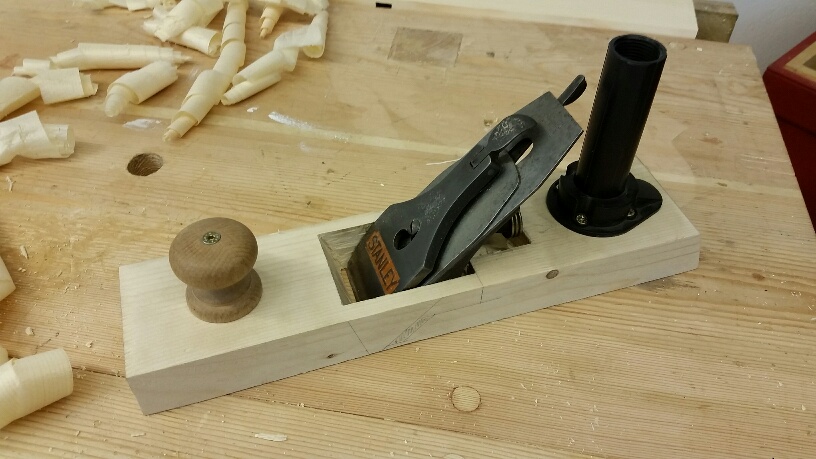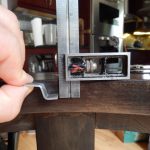We may receive a commission when you use our affiliate links. However, this does not impact our recommendations.
The concept of the “transitional plane” has piqued my interest for a while. Both off-the-shelf and user-made versions by their relative scarcity in my neck of the woods create intrigue. I decided to make a rough version using a 2 x 4, a donor No. 4-1/2 plane frog, a kitchen unit leg tote, and a cabinet door knob. Without much experience of these planes, I took a look at Christopher Schwarz’s write up from 2008. Unlike the Stanley transitional shown in Chris’ article, I kept the frog full depth as I did not want to sacrifice a frog from a user plane. This proved a fiddle to chop out. As I am sure you’re aware, the casting is very thin where the feet of the frog meet; trying to keep a few mm of timber intact proved tricky and time consuming, so I just chopped right through. It would also be stupid in the long term as the sole would have limited wear.
I seriously considered making it a laminated-style plane too. But my assumption was making a plane that way could be less effective with hand tools. On this occasion, at least, I found that to be the case as the chop-out is pretty simple for this type of plane – as long as the frogs legs are chopped off!
Clearly this plane is junk; no question of that. But as always, there is something I can draw from the experimentation. I know I don’t want to make a regular plane. There are too many good examples of planes both new and old, metal or wood, within reach of most people. Also the planing of pine with the grain is so very forgiving that even a plane with a 2 x 4 body can do a decent enough job. This underlines the fact that pine can be a perfect introduction to working wood and a joy with hand tools. However, demonstrations of plane performance on pine in terms of sharpness and surface finish are near pointless.
Finally, I am reminded how well made and refined tool designs are. Although fun to do, sticking with good vintage or new tools would be a better use of my time. But this is supposed to be fun right? And seeing a plane made from a 2 x 4 did bring a smile to my face – so in that respect, it was a success. Plus I have a more original idea for a shop-made tool in mind, thanks to the experimentation. With a donor on the way, I’ll see if can make something a little better and more interesting next time.
Here are some supplies and tools we find essential in our everyday work around the shop. We may receive a commission from sales referred by our links; however, we have carefully selected these products for their usefulness and quality.











Great article. My mallet doesn’t make the same rat-a-tat as yours. How does the face of the block wear over time?
That video reminds me of some of my first tool purchases. I couldn’t afford a new plane so I went to a used tool dealer, and for the price of a #4 Stanley I bought 4 transitional planes, 2 smoothers, a jack and a fore. The body on the jack plane was badly cracked so I replaced it with a piece of hard maple (beech was impossible to find here). Fortunately the excavation was simpler since the transitional hardware sits on top of the of the plane. I used those planes for nearly 20 years before switching to the Miller’s Falls metal bench planes I use now.
Thanks for posting this!
You are going to have tongues wagging on the forums, I like 🙂
Great project and a fun read! It’s tempting… I’ve got some old beech knocking about.
I like Graham’s videos. Not a lot of talking. Fast forwarding throughout and still getting the concept is helpful. Keep posting.
Very entertaining and informative .
Could you see yourself building a set for any reason ? Maybe using something other than pine ?
How about hollows and rounds ?